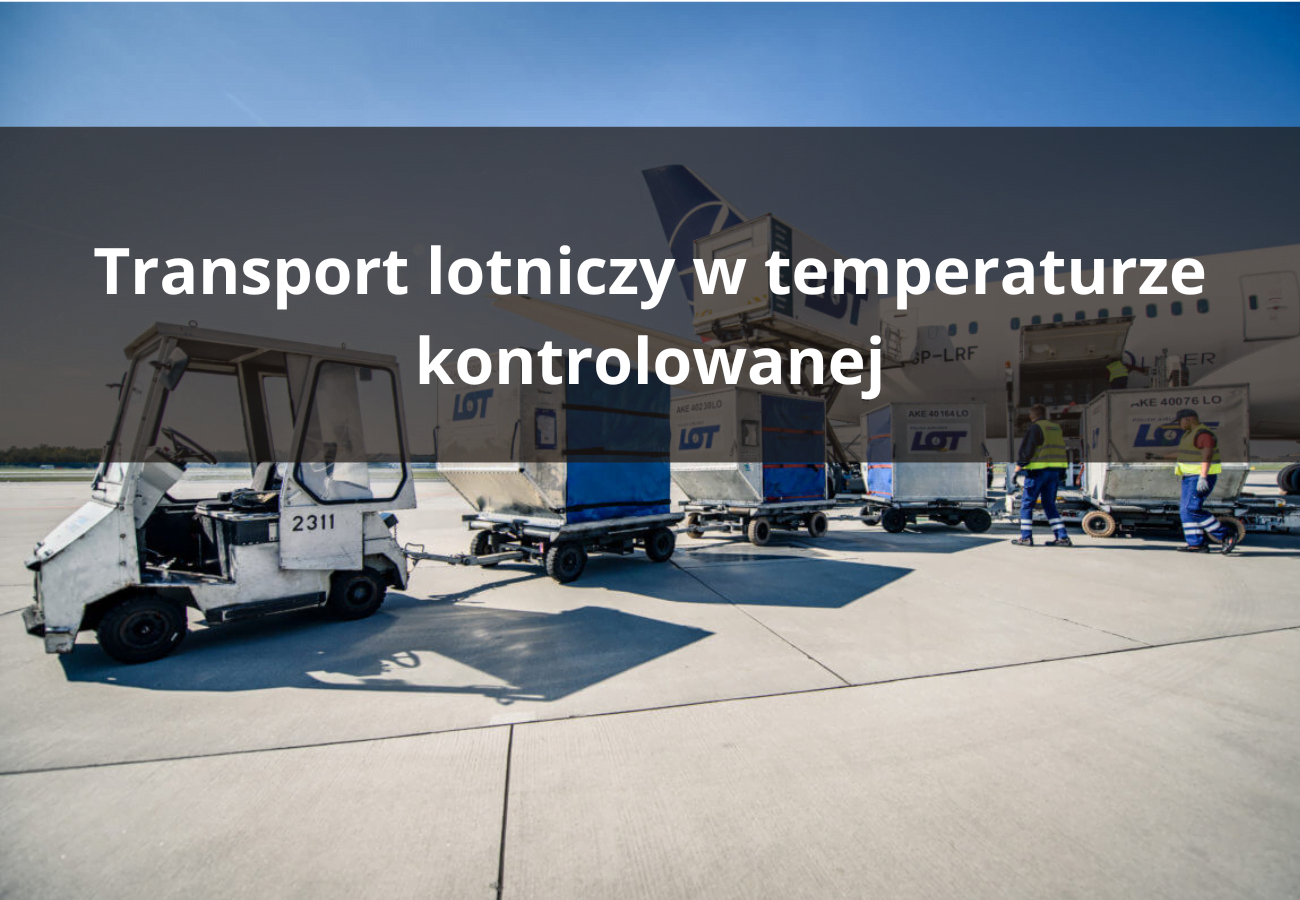There is no other invention that has so changed the face of the world as the aeroplane - these are the words of Alexander Klemin, one of the pioneers of aviation. Nowadays, air transport is an integral part of the global economy, enabling goods to move quickly and efficiently around the world. One of the key aspects that contribute to its efficiency is the ability to control the temperature of cargo. In our article, we take a closer look at this issue, discussing the basic principles, benefits, as well as the challenges of temperature-controlled air transport. Understanding the mechanics of how this type of transport works is crucial for many industries, especially those that require specialised handling of their products, such as the pharmaceutical and food industries. We will therefore zoom in on how temperature-controlled air transport works, the benefits of using it and its practical applications. We will also not miss the challenges faced by providers of this type of service and the solutions that allow them to overcome these difficulties. Finally, we will look to the future in an attempt to predict what developments await temperature-controlled air transport.
1. Principles of temperature-controlled air transport
Temperature-controlled air transport is vital in many industries, such as pharmaceuticals, food and technology. The basic principle is to maintain a constant temperature throughout the entire transport process, from loading to flight to unloading. This protects the products from the damaging effects of changing weather conditions.
When comparing different transport methods, airborne at controlled temperatures, stands out for its speed and efficiency. For example, maritime transport can take several weeks, while air travel usually does not exceed a few days. Below is a comparison table:
| Transport method | Duration | Temperature control |
| Air transport | 2-5 days | Yes |
| Maritime transport | 2-6 weeks | Yes, special refrigerated container required |
Accordingly, temperature-controlled air transport is ideal for products requiring a constant temperature, especially those with a short shelf life.
e can bring significant benefits to many industry sectors.
2. How does temperature-controlled air transport work?
While many people may think that temperature-controlled air transport is just about keeping the temperature down, it is much more complicated than that. The primary objective is to maintain a constant temperatureregardless of external conditions. This is particularly important when transporting goods such as foodstuffs, medicines or chemical products, which can spoil or be damaged by temperature changes.
| Type of goods | Temperature controlled | Examples of products |
| Food | 0-5°C | Fruit, vegetables, meat |
| Medicines | 2-8°C | Vaccines, insulin |
| Chemical products | Depends on the product | Paints, adhesives |
Cooling technology used in air transport is advanced and allows precise temperature control. In practice, this means that the temperature in the aircraft's hold can be adjusted as required, and even different sections of the hold can be maintained at different temperatures. This is crucial to maintaining the quality of the goods being transported and ensuring that they arrive at their destination intact.
Goods are transported in special refrigerated containers
Active temperature-controlled containers allow goods to be transported both in the air and on the ground, increasing the sustainability of temperature-sensitive goods by maintaining a stable cold chain throughout the transport cycle from start to finish. The containers operate with an active temperature control system based on compressor cooling and electric heating, or alternatively use a temperature control system based on dry ice cooling. Importantly, the containers are designed to work with different types of aircraft, both passenger and cargo.
Many refrigerated products often require temperature control between 2 and 8 °C during transport and storage. Special containers with temperature control from 2 to 8 °C throughout the shipment cycle have been developed to meet these requirements. These are the most commonly used containers in the aerospace industry. There are also other special temperature-controlled containers that support a temperature range of +15 °C to +25 °C and >-20 °C, and can be used for specialised transport requirements.
Temperature-controlled containers enable precise temperature control from start to finish at each stage of the cold chain transport cycle to ensure that products carried inside are not exposed to fluctuating conditions during the shipment's journey. Key features to ensure consistent temperature control, included in the most commonly available standard airline containers for temperature-sensitive goods, are:
- Insulated container shell made of composite material with excellent insulating properties;
- Full electric heating and cooling system;
- Rechargeable batteries for standard AC power points;
- Enhanced air circulation system inside the container to ensure a low temperature gradient throughout the cargo area;
- The air circulating through the heating and cooling unit is close to the set temperature;
- An easy-to-use control panel allows simple operation of the container;
- Fully validated solutions for recording temperature data and battery information;
- Containers can be accessed from all sides by forklifts, even when fully loaded, eliminating the need for rollers to move containers around the warehouse and to and from loading and unloading areas.
- Temperature-controlled containers come in various sizes and technical specifications. Such containers are suitable for transporting all kinds of perishable products, such as meat, fish, fruit and vegetables, dairy products and pharmaceuticals. In addition, because each temperature-controlled container has its own mechanism by which temperature parameters can be controlled, airlines are able to transport a wide range of products in a single flight
3 Examples of the use of temperature-controlled air transport
Both in the pharmaceutical and food industries, temperature-controlled air transport is extremely important. The delivery of medicines, vaccines or food requires that the right conditions are maintained to ensure their quality and safety. For example, vaccines on COVID-19 have to be stored at -70 to -80 degrees Celsius, which is only achievable with the specialised cooling systems used in air transport.
| Product | Temperature required | Example carrier |
| COVID-19 vaccine | -70 to -80°C | Lufthansa |
| Fresh fruit | 0 to 4°C | Emirates |
| Insulin | 2 to 8°C | FedEx |
Comparison of the above data shows how different temperature requirements are for different products and how important it is to be able to adapt transport conditions to the specific characteristics of the goods being transported.
Temperature-controlled transport of products:
- Refrigerated products
- Frozen food products
- Pharmaceutical products
- Diagnostic products
- Vaccines
- Serum
- Plasma
- Proteins
- Laboratory tests
- Biotechnology material
- High-tech temperature-sensitive equipment
4 Challenges and solutions in temperature-controlled air transport
The carriage of temperature-controlled goods represents a significant challenge for the air transport industry. The main problem is to maintain a constant temperature throughout the transport process, from loading to flight to unloading. It is also important to ensure adequate insulation and protection against possible damage. Below are some solutions that can help to deal with these challenges:
- Use of specialised containers - These containers are equipped with temperature maintenance systems that can be adjusted as required.
- Use of temperature monitoring - Thanks to modern technology, it is possible to track the temperature in real time, allowing a rapid response in the event of any deviation.
- Process planning and optimisation - By carefully planning and optimising processes, it is possible to minimise the time that cargo is exposed to temperature changes.






